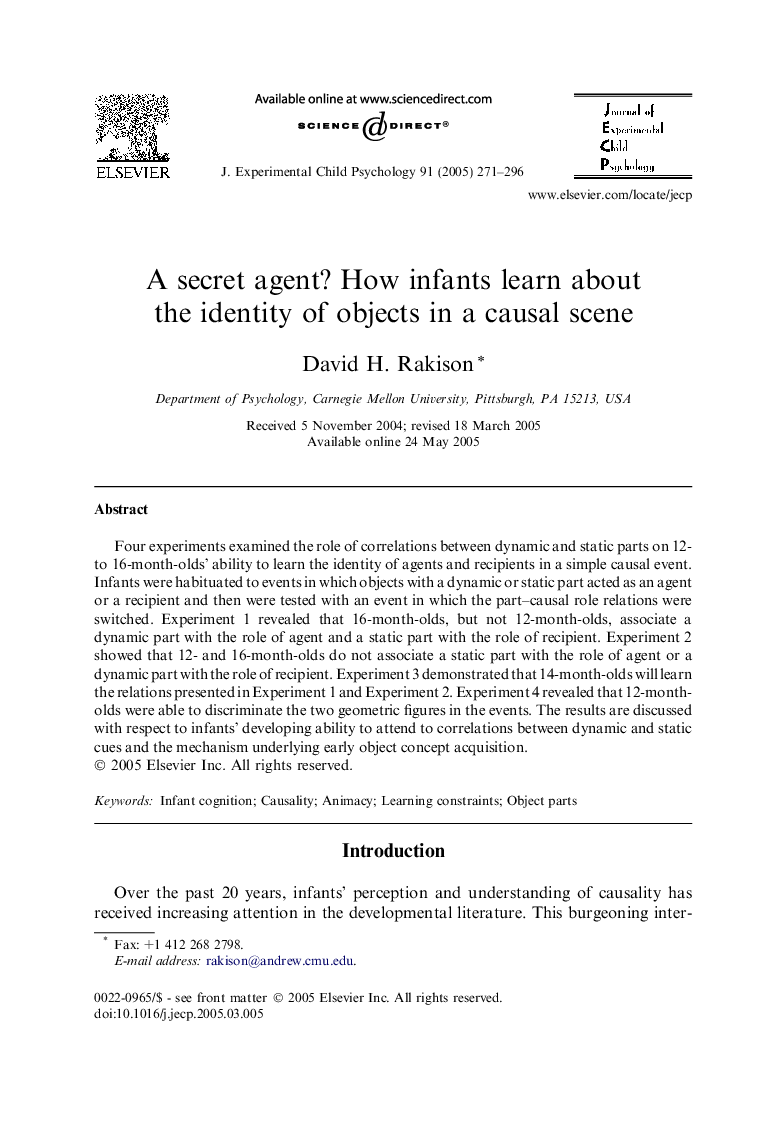| Article ID | Journal | Published Year | Pages | File Type |
|---|---|---|---|---|
| 10453163 | Journal of Experimental Child Psychology | 2005 | 26 Pages |
Abstract
Four experiments examined the role of correlations between dynamic and static parts on 12- to 16-month-olds' ability to learn the identity of agents and recipients in a simple causal event. Infants were habituated to events in which objects with a dynamic or static part acted as an agent or a recipient and then were tested with an event in which the part-causal role relations were switched. Experiment 1 revealed that 16-month-olds, but not 12-month-olds, associate a dynamic part with the role of agent and a static part with the role of recipient. Experiment 2 showed that 12- and 16-month-olds do not associate a static part with the role of agent or a dynamic part with the role of recipient. Experiment 3 demonstrated that 14-month-olds will learn the relations presented in Experiment 1 and Experiment 2. Experiment 4 revealed that 12-month-olds were able to discriminate the two geometric figures in the events. The results are discussed with respect to infants' developing ability to attend to correlations between dynamic and static cues and the mechanism underlying early object concept acquisition.
Related Topics
Social Sciences and Humanities
Psychology
Developmental and Educational Psychology
Authors
David H. Rakison,
